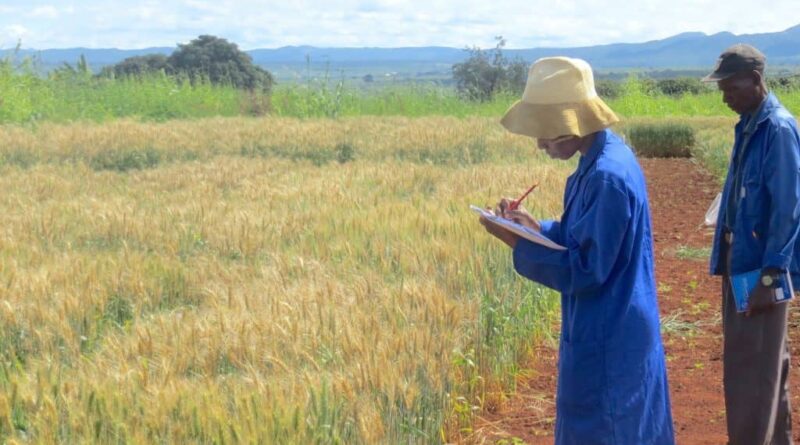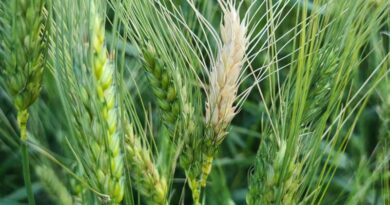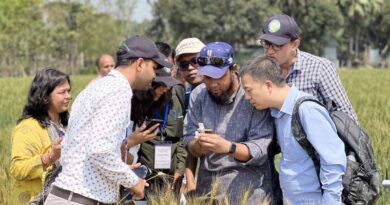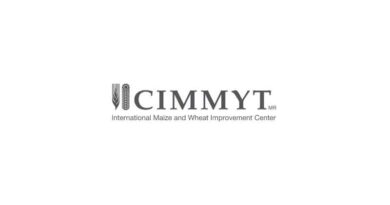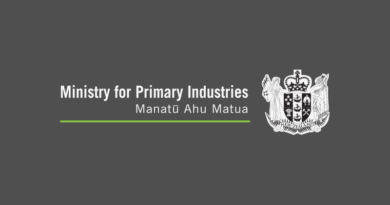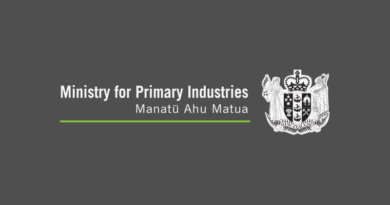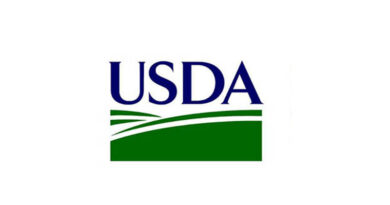Wheat blast has made the intercontinental jump to Africa
Researchers in Zambia confirm the arrival of this devastating fungal disease to the African continent.
28 September 2020, Zambia: Wheat blast, a fast-acting and devastating fungal disease, has been reported for the first time on the African continent. In an article published in the scientific journal PLoS One, a team of scientists confirmed that symptoms of wheat blast first appeared in Zambia during the 2018 rainy season, in experimental plots and small-scale farms in the Mpika district, Muchinga province.
Also Read: MustGrow Commences Banana ‘Panama Disease’ Testing in Columbia
Researchers from the International Maize and Wheat Improvement Center (CIMMYT), the US Department of Agriculture – Foreign Disease Weed Science Research Unit (USDA-ARS) and the Zambian Agricultural Research Institute (ZARI) participated in this study.
Wheat blast poses a serious threat to rain-fed wheat production in Zambia and raises the alarm for surrounding regions and countries on the African continent with similar environmental conditions. Worldwide, 2.5 billion consumers depend on wheat as a staple food and, in recent years, several African countries have been actively working towards reducing dependence on wheat imports.
“This presents yet another challenging biotic constraint to rain-fed wheat production in Zambia,” said Batiseba Tembo, wheat breeder at ZARI and lead scientist on the study.
A difficult diagnosis
“The first occurrence of the disease was very distressing. This happened at the spike stage, and caused significant losses,” Tembo said. “Nothing of this nature has happened before in Zambia.”
Researchers were initially confused when symptoms of the disease were first reported in the fields of Mpika. Zambia has unique agro-climatic conditions, particularly in the rainfed wheat production system, and diseases such as spot blotch and Fusarium head blight are common.
Also Read: PMFAI’s ICSCE 2020 to be hosted on 3D Virtual Platform
“The crop had silvery white spikes and a green canopy, resulting in shriveled grains or no grains at all… Within the span of seven days, a whole field can be attacked,” Tembo explained. Samples were collected and analyzed in the ZARI laboratory, and suspicions grew among researchers that this may be a new disease entirely.
Tembo participated in the Basic Wheat Improvement Course at CIMMYT’s global headquarters in Mexico, where she discussed the new disease with Pawan Singh, head of Wheat Pathology at CIMMYT. Singh worked with Tembo to provide guidance and the molecular markers needed for the sample analysis in Zambia, and coordinated the analysis of the wheat disease samples at the USDA-ARS facility in Fort Detrick, Maryland, United States.
All experiments confirmed the presence of the fungus Magnaporthe oryzae pathotypeTriticum (MoT), which causes the disease.
“This is a disaster which needs immediate attention,” Tembo said. “Otherwise, wheat blast has the potential to marginalize the growth of rain-fed wheat production in Zambia and may threaten wheat production in neighboring countries as well.”
Wheat blast spreads through infected seeds and crop residues, as well as by spores that can travel long distances in the air. The spread of blast within Zambia is indicated by both mechanisms of expansion.
A cause for innovation and collaboration
CIMMYT and the CGIAR Research Program on Wheat (WHEAT) are taking action on several fronts to combat wheat blast. Trainings and international courses invite participants to gain new technical skills and knowledge in blast diagnostics, treatment and mitigation strategies. WHEAT scientists and partners are also studying the genetic factors that increase resistance to the disease and developing early warning systems.
“A set of research outcomes, including the development of resistant varieties, identification of effective fungicides, agronomic measures, and new findings in the epidemiology of disease development will be helpful in mitigating wheat blast in Zambia,” Singh said.
“It is imperative that the regional and global scientific communities join hands to determine effective measures to halt further spread of this worrisome disease in Zambia and beyond,” Tembo expressed.

